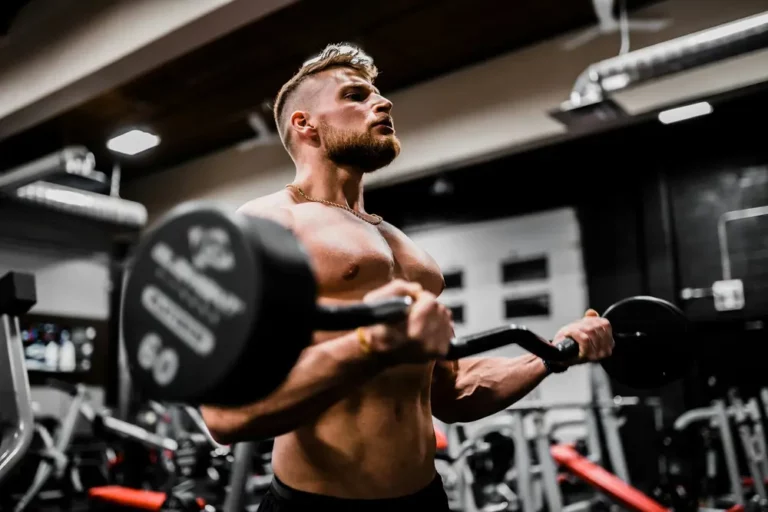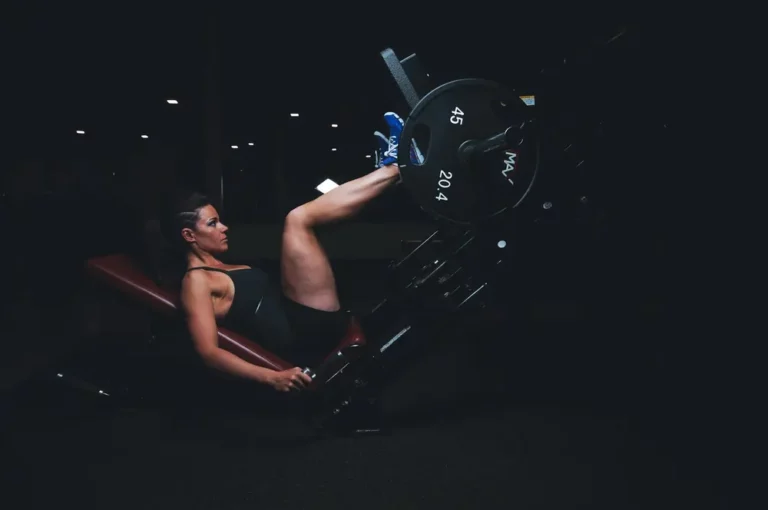Barbell High Pull Muscles Worked: Maximize Your Gains with Proper Technique
When I first tried the barbell high pull, I was amazed by how it engaged my entire body. It’s not just an upper body workout; it’s a full-body powerhouse move. From the tips of your fingers gripping the bar to the balls of your feet pushing off the ground, every muscle works in harmony.
The beauty of the high power pull lies in its ability to stretch and strengthen a wide range of muscles. Whether you’re looking to beef up your back, shoulders, or even legs, this exercise has got you covered. Let’s dive into the muscles this dynamic move targets and why it’s become a staple in my fitness routine.
Overview of the Barbell High Pull Exercise
Technique and Form for Effective Execution
When I first approached the barbell high pull, I was amazed at the technical nuance involved. It’s so much more than just yanking a weight off the ground. The proper technique begins with your stance – you’ll want your feet about shoulder-width apart. This provides a stable base without being so wide that it interferes with the movement.
I learned that gripping the bar is also key. It should be just outside your knees, which allows for maximum force when you begin the pull. Now, this is where it gets interesting. As I pull the bar up, I focus on keeping it as close to my body as possible, driving through my legs and hips to generate power. It’s like I’m trying to jump off the ground, but instead, I’m channeling all that explosive energy into the bar.
The phase that really transformed my delts and traps was the moment of shrugging and pulling under the bar. Your elbows need to shoot up high and to the side, aiming to be higher than the bar, with your elbows pointed about 45 degrees back. It’s critical to remember that this movement is explosive – I like to think of it as saving my puppy from being squashed under the weight. It adds a bit of urgency and power to the pull.
Common Mistakes to Avoid in High Pulls
Through trial and error, I’ve seen it all and made every mistake in the book when it comes to high pulls. One of the most common errors is pulling with the arms too early. Many beginners, myself included, instinctively start yanking the bar up with their arms right from the get-go. It took me a while to understand that the power should come from the legs and hips first, with the arms playing more of a guiding role.
Another pitfall I’ve observed is not being explosive enough. Some folks approach the high pull with a bit too much grace as if they’re lifting a delicate object. The reality couldn’t be more different. Explosiveness is key; without it, you’re not fully engaging the muscles intended for the exercise, nor are you maximizing the potential for hypertrophy and strength gains.
Neglecting the finish of the movement is yet another mistake. I’ve seen people – and I was one of them – who focus so intensely on the initial pull that they forget to properly extend their hips and knees at the top of the movement. This cuts the exercise short and robs you of the full range of muscle engagement, especially in those final, critical moments of the pull.
Primary Muscles Worked in Barbell High Pull
When I first embarked on incorporating barbell high pulls into my workout regimen, I was curious about which muscles I’d be engaging the most. Let’s dive into the primary muscles that get fired up during this exercise.
Trapezius Muscles
My traps have always been a focal point in my workouts, and high pulls really bring the heat to this area. The trapezius muscles extend across the back of the neck and shoulders, playing a crucial role in the pulling movement. I noticed significant development in both the size and strength of my traps, contributing to an improved upper body silhouette. By elevating the shoulders and shrugging during the high pull, I engage these muscles intensely.
Deltoids
Another group of muscles that benefit immensely from barbell high pulls are the deltoids. These shoulder muscles are responsible for a wide range of movements and are divided into three distinct parts: anterior, lateral, and posterior deltoids. High pulls primarily target the posterior and lateral deltoids, enhancing shoulder width and roundness. The explosiveness of this exercise requires substantial deltoid engagement, especially as the bar is pulled upwards.
Rhomboids
Situated between the shoulder blades, the rhomboids are often overlooked in many workout routines. However, they play a pivotal role in retracting the scapula, which is crucial for the proper execution of high pulls. Strengthening my rhomboids has improved my posture and reduced the risk of shoulder injuries. These muscles work in harmony with the traps to stabilize the upper back during the lift.
Hamstrings
The barbell high pull isn’t just an upper body exercise; it also puts a decent amount of work on the lower body. The hamstrings, located at the back of the thigh, are significantly activated as I initiate the lift. Generating power from the legs is key, with the hamstrings working to extend the hip and contribute to the explosive part of the movement. I’ve noticed improved hamstring strength and flexibility since incorporating high pulls into my routine.
Gluteus Maximus
Lastly, the powerhouse of the lower body — the gluteus maximus. This major muscle group benefits from the dynamic lift and lower phase of the high pull. As I explode upwards from the squatting position, my glutes are engaged, providing the strength needed to perform the lift correctly. Regular high pulls have contributed to stronger, more toned glutes, improving my overall lower body strength and appearance.
Through my experience, I’ve learned that the barbell high pull is a comprehensive exercise that targets a wide array of muscles, from the traps and deltoids to the hamstrings and glutes. Its inclusion in my workout regimen has not only spiced up my routine but also led to noticeable muscular development and strength gains in these key areas.
Secondary and Stabilizing Muscles Engaged
When I dive into a workout, I love knowing exactly what muscles I’m hitting. The barbell high pull is no exception. While it’s true that this move primarily targets your delts and traps, it doesn’t stop there. A range of secondary and stabilizing muscles get in on the action, too, keeping the movement efficient and safe. Let’s take a closer look at these unsung heroes.
Pectoralis Major (Chest)
I used to think that my chest muscles were only getting a workout during bench presses or push-ups. However, during a barbell high pull, my pectoralis major muscles are actually engaged as well. This occurs when I’m pulling the bar upwards, helping to stabilize my upper body and ensuring a smooth lift.
Triceps Brachii
Here’s the interesting thing: while the barbell high pull is predominantly a pulling motion, it doesn’t mean my triceps get to slack off. Quite the opposite, actually. My triceps brachii work to stabilize my elbows and extend my arms during the lowering phase of the movement. This kind of synergistic muscle activity is what makes full-body exercises so incredibly efficient.
Erector Spinae Group
Keeping my back straight and stable during the high pull is crucial, and that’s where my erector spinae muscles come into play. Stretching along my spine, these muscles ensure I maintain proper posture throughout the lift. Not only does this protect my back, but it also maximizes the effectiveness of the exercise. I’ve got to give credit where credit’s due, and my erector spinae definitely deserves some recognition.
Core Muscles (Abs, Obliques, Transverse Abdominis)
Believe it or not, my core gets an incredible workout during barbell high pulls. As I maintain stability and control during the explosive pulling phase, my abs, obliques, and transverse abdominis are all firing to keep my torso rigid. This not only helps with the lift but also contributes to a stronger, more resilient core overall.
Quadriceps
Lastly, let’s not forget about the lower body. My quadriceps play a supporting role during the initial phase of the lift. As I begin pulling the bar off the ground, my quads activate to support my knee extension. It’s a reminder that even when the focus seems to be on the upper body, my legs are still getting in some work, making the barbell high pull a more comprehensive exercise than one might initially think.
Benefits of the Barbell High Pull
When it comes to my training routine, I’ve found that incorporating barbell high pulls has brought me some unexpected benefits that have significantly improved not just my lifts but also my overall physical well-being. Let me share with you why this exercise deserves a spot in your workout routine, too.
Improved Strength and Power
One of the first things I noticed after adding barbell high pulls to my regimen was a noticeable increase in both my strength and power. This exercise is a powerhouse when it comes to working a wide range of muscle groups simultaneously, including the deltoids, trapezius, and the entire posterior chain—muscles that are critical for explosive movements in sports and daily activities. The dynamic nature of the high pull, involving a rapid extension of the hips and knees, translates directly into improved performance in other lifts and athletic movements. It’s like giving a turbo boost to your muscles, prepping them for a more intense workload and faster growth.
Enhanced Balance and Stability
Another perk of regularly performing barbell high pulls is the remarkable improvement in balance and stability. Initially, I didn’t anticipate how balancing a weighted barbell while executing a high-speed, compound movement could enhance my proprioception—the body’s ability to perceive its position in space. But as I progressed, I found that my ability to control the weight throughout the movement forced my body to engage smaller, stabilizing muscles that I didn’t typically work on with more isolated exercises. This has had a fantastic spillover effect on other activities, from athletics to day-to-day tasks, by making me more agile and less prone to injuries.
Increased Core Stability
With barbell high pulls, I’ve seen a significant uptick in my core stability. This exercise demands a robust core engagement to maneuver the barbell safely and effectively with control. It’s a challenging, dynamic move that requires the transverse abdominis, obliques, and lower back to work in concert, leading to improved posture and stronger lifts. In a way, it’s like hitting two birds with one stone: getting a stronger core while working on my power and muscle hypertrophy.
Functional Fitness for Athletic Performance
Lastly, the cherry on top of all these benefits is how barbell high pulls have elevated my athletic performance. The term “functional fitness” gets thrown around a lot, but in the case of barbell high pulls, it’s genuinely applicable. The movement mimics many real-world activities and sports-specific movements, such as jumping, running, and throwing. By improving muscular coordination, strength, and power in a way that’s transferable to real-life movements, I’ve noticed a significant improvement in my sports performance, whether it’s sprinting faster, jumping higher, or just feeling more powerful overall.
Exercise Variations and Alternatives
When I delve into the world of strength training, I’m always looking for ways to spice up my routine. Even when focusing on specific muscle groups, like what the barbell high pull targets, I believe in the power of variety. It not only prevents boredom but can also challenge my muscles in new ways. So, let’s break into some variations and alternatives that keep my workouts fresh and effective.
Barbell High Pull Variations
One variation I’ve integrated into my workouts is the Snatch Grip High Pull. By employing a wider grip, I’ve noticed it places more emphasis on my delts and traps, giving them a different kind of workout than the standard grip. It’s astounding how a slight adjustment in hand placement can diversify muscle engagement!
Another variation I’ve experimented with is the Hang High Pull. Starting from the hang position rather than the ground, this variation forces me to focus on the explosive part of the lift right from the get-go. It’s a fantastic way to work on power generation and has been a game-changer in improving my overall explosive strength.
Alternative Exercises Like Bent-Over Rows and Upright Rows
When I’m looking to target similar muscle groups but want to switch things up entirely, I turn to bent-over rows and upright rows.
Bent-Over Rows have been a staple in my routine for as long as I can remember. With a hinge at the hips and a tight core, pulling the barbell toward my lower chest engages my lats, rhomboids, and traps in a unique manner. What I love about this exercise is its emphasis on back strength and posture, which are crucial for everyday health.
On days when I want to zero in more on my shoulder girdle, Upright Rows step into the spotlight. The beauty of this exercise lies in its simplicity and its ability to sculpt my shoulders and traps. By keeping the barbell close to my body and pulling it straight up, every lift feels like a step closer to stronger, more defined shoulders.
Incorporating these exercises into my routine has not only provided me with a comprehensive upper-body workout but has also introduced a much-needed variety. Whether it’s trying out different barbell high pull variations or mixing in alternative exercises, the goal is always to challenge my body, keep my workouts dynamic, and push my limits a little further.
Integrating High Pulls Into Your Workout Routine
When it comes to enhancing my fitness routine, integrating high pulls has been a game-changer, especially for targeting specific muscle groups. Let me dive into how you can incorporate high pulls for optimal muscle development and combine them with other exercises for a well-rounded workout.
Incorporating High Pulls for Muscle Development
Integrating high pulls into my workout routine has significantly amplified muscle development, especially in my traps and delts. For those looking to add size and strength, focusing on these areas can provide impressive results. The beauty of high pulls lies in their versatility—they can be adjusted to focus on different aspects of muscle development.
To get started, I initially incorporated high pulls once or twice a week, focusing on lower reps with heavier weights to build strength. Over time, I experimented with higher reps at a lower weight, which helped in improving muscle endurance. Remember, the key to muscle growth is progressive overload, so don’t be afraid to continuously challenge yourself by increasing the weight as you get stronger.
To maximize the benefits, keep these points in mind:
- Ensure a wide snatch grip on the bar to effectively target the traps and delts.
- Perform the movement explosively, as this encourages maximum muscle engagement.
- Keep the bar close to your body during the pull to maintain proper form and reduce the risk of injury.
Combining Complementary Exercises for Balanced Training
For a more comprehensive and balanced workout, I’ve found it beneficial to combine high pulls with complementary exercises. This approach promotes muscular balance, reducing the risk of overuse injuries and improving overall athletic performance.
Here are a few exercises I’ve incorporated alongside high pulls:
- Bent-Over Rows: To enhance upper back strength and posture.
- Upright Rows: Great for adding variety and further targeting the shoulder muscles.
- Deadlifts: To develop lower back strength and improve core stability.
By mixing these exercises into my routine, I’ve noticed improved muscular symmetry and functional strength, which is crucial for both everyday activities and athletic performance. It’s important to ensure each workout session includes a mix of exercises that target different muscle groups to foster balanced development.
Incorporating high pulls and complementary exercises into a workout routine isn’t just about building muscle. It’s about creating a well-rounded, functional body capable of performing at its best, whether in daily activities or in competitive sports. Remember, the journey to improved fitness is a marathon, not a sprint. Consistency and dedication are key.
Conclusion
So there you have it. The high pull isn’t just another exercise to add to your routine; it’s a powerhouse move that targets key muscles for a stronger, more balanced physique. Remember, it’s not just about lifting heavier weights but also about maintaining proper form and gradually increasing your load to challenge your muscles. And by pairing high pulls with exercises like Bent-Over Rows and Deadlifts, you’re setting yourself up for success in building a body that’s not only aesthetically pleasing but also functionally fit. Keep pushing yourself and stay consistent with your workouts. Trust me, your body will thank you for it.
FAQ – Frequently Asked Questions
How many reps for high pull?
The recommended range for high pull reps is between 2-5 per set, using 70%-90% of your best snatch weight. This range helps in reaching the maximum height with the elbows.
Is high pull bad for shoulders?
No, high pulls are not inherently bad for the shoulders, but like any exercise, proper form, warmup, and technique are essential to avoid injury. Following correct guidance is key.
What muscles does high pull from the floor work?
High pulls from the floor primarily target hamstrings, quadriceps, and shoulders, while also engaging calves, glutes, hip flexors, and the lower back for a comprehensive workout.







